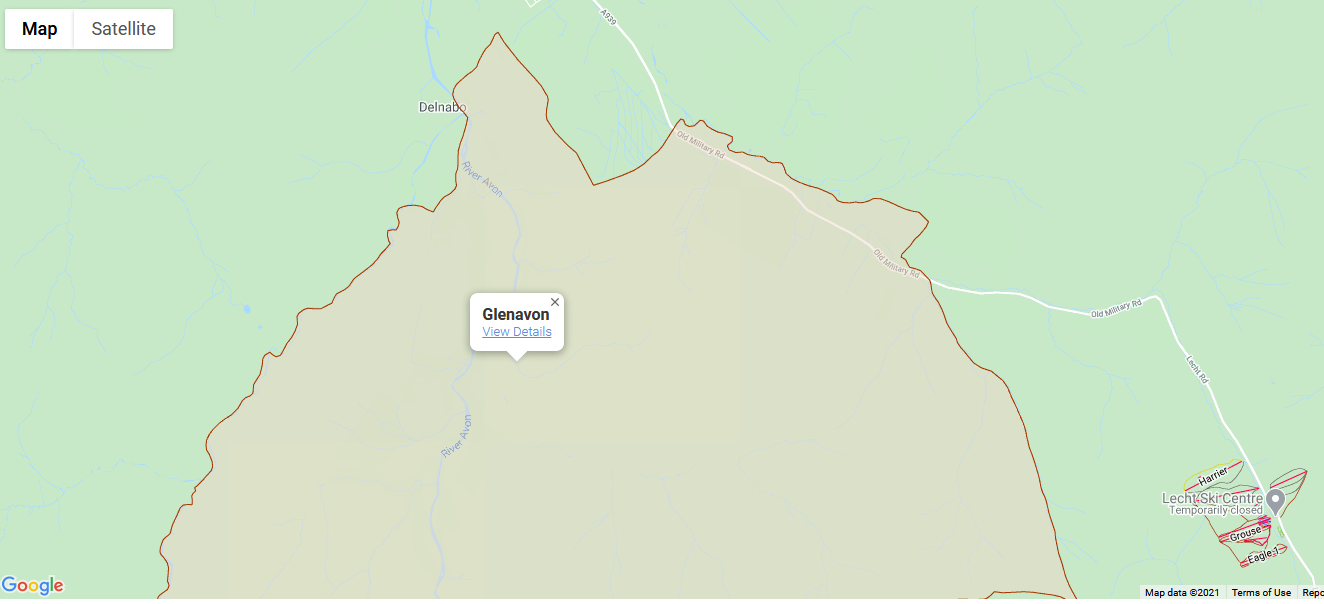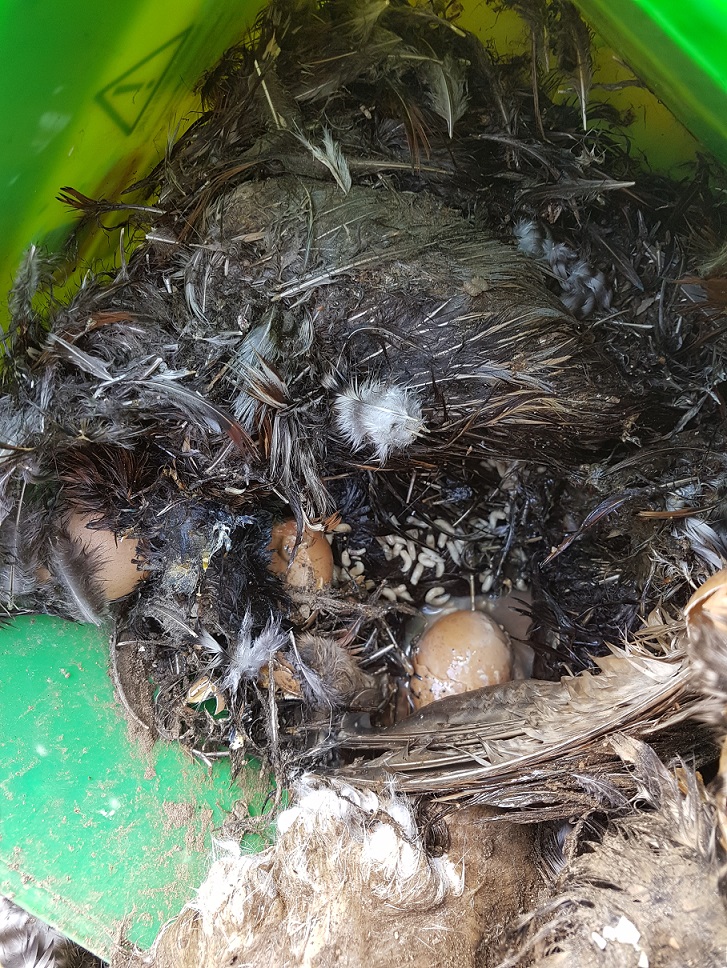
Recently I was sent photos, taken in 2019, of a stink pit at the northern end of the 42,000 acre Glenavon Estate, about 5km south of Tomintoul.


The person who sent the photos had been alerted by a walker who had stumbled across the pit a couple of months earlier in February and reported finding “scores of mountain hare” carcases. That would have been within the “open season” for shooting mountain hares, which runs from August to the end of February but is due to be abolished later this year. Since there are no laws about the disposal of the corpses of most game animals, unless they enter the food system, shooting the hares and dumping them in this pit was quite legal.
In 2018, the Glenavon Estate was granted a license by Scottish Natural Heritage, now NatureScot, to shoot 200 mountain hares in the closed season, “for the purpose of preventing serious damage to timber and crops”. They reported shooting 157 (see here). This estate, which is a member of the Cairngorms National Park Authority (CNPA)’s East Cairngorms Moorland Partnership (ECMP), appears to shoot a lot of hares. That didn’t stop the CNPA putting out a news release in September 2019 (see here) claiming the ECMP was doing lots of good work to protect mountain hares Perhaps staff didn’t realise what was actually going on on the ground?
By the time my contact visited, apart from the couple of mountain hare corpses by the plastic tub, there was greater evidence of red deer remains than mountain hare. Unlike farm animals the disposal of wild red deer corpses or body parts is not regulated, so long as they are not diseased. There is, however, best practice guidance (see here):

The photos clearly show that best practice wasn’t being followed. The body parts of the deer weren’t covered with soil and the area wasn’t fenced. The reason for this is the hole was being used as a stink pit, a means of attracting and killing other animals attracted by the smell of decay:

Nearby was another snare, intended to trap animals as they were drawn towards the pit.

Within the tub, there were also some hen’s eggs:
 That was highly suspicious. Eggs laced with poison have long been used to kill mammals and birds and that appears the only conceivable reason why they would have been placed here. However, the presence of live maggots suggest that for some reason poison may not have been added to the eggs in this case.
That was highly suspicious. Eggs laced with poison have long been used to kill mammals and birds and that appears the only conceivable reason why they would have been placed here. However, the presence of live maggots suggest that for some reason poison may not have been added to the eggs in this case.
What needs to happen?
The CNPA set up the ECMP in 2015 in an attempt to improve moorland management within the National Park. Unfortunately there is a lack of transparency about what the estates in the ECMP have changed as a result – or more importantly what hasn’t changed. It’s not even clear if the CNPA has asked Glenavon and the other estates involved (Balmoral, Delnadmamph, Invercauld, Mar Lodge, Mar and Glenlivet) to stop using stink pits.
But then if you search in the Werritty Review on Grouse Moor Management (see here) or the Report on the Management of Wild Deer in Scotland (374 pages) (see here) published last February, you will find not a single mention of stink pits there either. It’s as though our public authorities have a complete mental blank about the way stink pits are used to persecute wildlife in Scotland.
A ban on stink pits should have been introduced in our National Parks, which have a statutory duty to conserve wildlife, the moment they were created. With the Scottish Government now having committed to introduce a grouse moor licensing scheme in its response to the Werritty Review (see here), there is an opportunity for the public to press for a ban on the use of stink pits as a condition of the new licenses. My thanks to the sender of the photos for helping people see what is going on in the Cairngorms under the guise of land management. If you want to help, please share this post or the photos with politicians and ask them to ban stink pits.

Horrific scandal seeing this, the usual crap these estates come out with” protecting trees” they must think we are stupid. As for the SNH or Natural Scotland or whatever they call themselves nowadays who controls them????
The estate by us has been shooting hares continuously for most of the last year. We had a good healthy amount but now there are none in the fields. It really sickens me.
This is a truly horrific. Thanks for reporting on this horrible practice which, up until now, I had never heard of.
These stink pits can be found on estates where deer management is practiced. Within the last two years I have come across them on land which, according to the indicative land ownership map published by the CNPA, is part of Balmoral or Invercauld estates. The body parts were uncovered. They were in places less frequented by the public. This is why many estates in the Cairngorms National Park have erected notices which ask the public to keep to paths and tracks where possible. This is to discourage people from discovering what bad or illegal activities are going on away from the main walking and cycling routes. These “Welcome to the Moor” notices are in breach of the 2003 right to roam legislation and many of them carry the logo of the CNPA. The CNPA did not give permission for their logo to be used in this way but have done nothing to get the notices removed or altered despite several reminders.
If you Google stink pits it’s easy to see how widespread this practice is. The dumping of carcasses would not be tolerated, would be illegal elsewhere. The estate owners who encourage this would be the first to complain if anybody else disposed of corpses in this way on their land. One rule for the rich and another for the rest of us.
Yet another disgraceful practice being carried out by the so-called ‘sporting’ estates of the East Cairngorms Moorland Partnership (ECMP). Your comment, Nick, on CNPA staff not realising what was actually going on on the ground is more than likely correct. I see lots of evidence of meetings with the ECMP, but I would like to see CNPA producing evidence of un-announced visits in response to reports, rather than what I suspect is a phone call to the estate to discuss, with maybe a cursory visit weeks later. CNPA has been ‘cuddling up’ to the ECMP for years and achieved nothing of any material consequence, except lots of meaningless words. The time is long overdue for our National Park to live up to its environmental credentials and introduce requirements for these grouse and deer moor monocultures to rewild and demonstrate significant improvements in biodiversity. A start would be for CNPA to openly condemn the widespread practice in predator extermination or any other wildlife which they perceive may reduce grouse numbers.
Can you identify the species of bird which laid the eggs?
The Animal By-Products Regulations set out procedures for handling, processing and disposing of animal by-products not intended for human consumption.
Article 10 of the Animal By-Products Regulations sets out low risk Category 3 material covered by the ABPR. Article 10(k)(ii) includes eggs amongst materials “originating from territorial animals”.
In Scotland, The Animal By-Products Regulation (EC) No 1069/2009 has been implemented into Scottish law through the The Animal By-Products (Enforcement) (Scotland) Regulations 2013 (with amendments made by The Animal By-Products (Miscellaneous Amendments) (Scotland) Regulations 2015 (S.I. 393/2015)).
R5 of The Animal By-Products (Enforcement) (Scotland) Regulations 2013 (Restrictions on access to bodies) states that “The body or part of a body of any farmed animal that has not been slaughtered for human consumption must be held by an operator, pending consignment or disposal, in accordance with the EU Control Regulation as read with the EU Implementing Regulation, in such manner as to ensure that any animal or bird will not have access to it.”
In my opinion, R5 of The Animal By-Products (Enforcement) (Scotland) Regulations 2013 bans, as a bait in a stink pit (aka a midden), the use of the body or part of a body of any farmed animal that has not been slaughtered for human consumption. Such items must be held by the person or establishment with control of the item in a manner which will ensure that no animal or bird will have access to it whilst the item is being held pending consignment or disposal. Accordingly, poultry, livestock, eggs, chicks and farmed fish and fish eggs or any body parts of such farmed animals cannot be used as a bait in a stink pit but must be held in a secure, safe manner whereby no animals or birds whatsoever have access to it.
This is a view that is supported by the NGO’s Legal feature writer Matthew Knight in the Spring 2014 edition of Keeping the Balance. In that issue Mr Knight argues that “Waste eggs, chicks and dead pheasants, partridges and other gamebirds that have been bred and died in captivity must be dealt with in accordance with the Order and not just buried or left lying about. They certainly cannot be used in a midden. The same applies to diseased wild animals, such as sick deer humanely shot.”
I would suggest contacting the Scottish Environment Protection Agency for their view.
Best of luck.